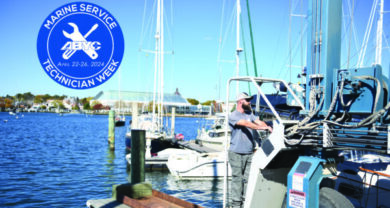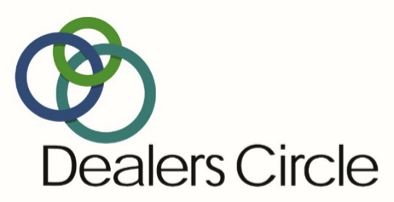Going Home
There’s no place like home in the pumps sector of the marine industry these days. People want to escape the hassles of day-to-day life when they get out on the water, but they often also want to take as many of their creature comforts with them as they can.
Talk to some of the companies that manufacture the hundreds of different sizes and types of pumps used for marine applications these days and you’ll hear phrases such as “water like home” or “at-home performance.” Expectations have increased as customers demand more than reliability. They expect improved performance and convenience as well.
Pump manufacturers must not only be able to keep a boat afloat in a pinch, they must also make products that produce strong showers, or enough water pressure to properly clean off the deck.
Customers have raised the bar, and pump manufacturers are working hard to keep up.
“We’re following a trend in marine where boats are becoming more sophisticated, not necessarily getting larger, but they are more sophisticated,” says Steve Tilders, marketing manager for Jabsco Worldwide. “People are demanding more and more at-home type performance out of all of their accessories on board. Because of that we’ve had to step up the performance of the products.”
Tilders says the trend he currently sees in the sector is toward pumps with higher capacity and higher pressure, and SHURflo’s Ryan Sessler concurs. The senior marine market manager says customers that used to be satisfied with pumps that would produce water at a rate of 2.8 gallons per minute, now want pumps in the 4 to 5 GPM range.
“They want to be able to take a shower and have enough water, and not have to worry if someone goes to the sink and turns it on to brush their teeth,” Sessler says. “The niche areas are covered right now, but what is happening is that the customer is demanding more.”
Sessler believes that all the choices available to the consumer make this a unique time in the marine plumbing industry. SHURflo has been working directly with customers, as well as with retail accounts, distribution and OEMs, to stay abreast of consumer demand.
Toward that end, Sessler says the company is in the midst of releasing a “new generation” of products, probably 8-10 pumps in all, four of which are already out. Two of those are the larger capacity 5-gallon-per-minute pumps and two are 4-gallon-per-minute pumps.
Business outlook
While SHURflo is a market leader in freshwater and washdown pumps, Tilders says Jabsco has the lead in bilge and live well pump market share with its Rule brand.
As a whole, 2004 was a good year for the pumps segment. Tilders says there was 13-percent growth as an industry in the plumbing market, which came on the heels of a couple of years of single-digit growth.
But things were even better at Jabsco.
“2004 was a tremendous year,” Tilders says. “We had good weather throughout the spring last year. Boat sales were way up, attitudes were good and we also took market share. The industry itself was up 13 percent and our plumbing numbers beat that number.”
Jabsco has also done well this year, especially on the aftermarket side, but Tilders says that growth has cooled in 2005, with some softening on the retail side, and he doesn’t expect the industry to equal the performance of last year.
Sessler says SHURflo is off to a good start in 2005 after a strong 2004, and that the company had an excellent first quarter. He did note, however, some softening in the aftermarket and said poor weather this spring may have played a role in that.
“We’re going to see how the rest of the year plays out,” Sessler says. “They’re claiming that OEM business in general is going to be up for 2005 in general, which will help up out tremendously.”
Business at Johnson Pump so far this year has been consistent, but not booming. The company hasn’t seen any fall off, but hasn’t seen tremendous growth either.
Gregg Pardus, aftermarket sales manager for the company, says an unimpressive stock market and sluggish unemployment numbers have dampened business. He also mentions the weather as a factor, pointing to conditions in the Midwest, where the company is located (Chicago) and has a very strong market presence.
Pardus says Johnson Pump does its best business in the Midwest, where the company is very strong with bass fisherman and bass boat companies. He says the company’s Mayfair brand, which is its freshwater brand, does well in a region that stretches from the Rocky Mountains to the eastern end of Ohio, and notes that the company works with some of the Genmar companies, as well as independent boat builders, through the middle of the country.
Demand in that area is centered on Johnson Pump’s aeration and live-well products moreso than its bilge products.
If the company tends to be weaker in any particular region it is on the coasts, with its saltwater and heavy-duty type of product lines. Pardus says Johnson Pump is still working to boost the market recognition of those products on both the East and West Coasts.
He agrees that the pumps sector is moving in the same direction as much of the rest of the industry, with an overall trend toward increased reliability and convenience, and is doing its part to help elevate the overall boating experience for the customer.
“I think one of the challenges for our industry is to create products and systems that create that ease-of-use, maintenance-free environment for the user,” Pardus says.
But he believes there is still work to do.
“I think in other areas, as well as ours, increasing the reliability of the pumps, increasing the performance of the pumps is an area where we all could do a better job.”
Meeting the challenge
All three companies agree that improved performance and ease of use will be important if the segment, and the industry as a whole, is going to continue to grow. Given the diversity in both product and clientele in the pumps segment, that goal even more difficult than usual to attain. But most manufacturers are working to meet the challenge.
“Our industry is so segmented that you have to focus on those segments to grow your business,” Sessler says. “Because the guy buying that deck boat is totally different than the guy buying that 28-foot cruiser. It’s different customers buying in different segments, and it’s trying to maintain that customer base and get them the products they need or are looking for, and everybody is different.
“It’s kind of complicated but our whole goal is to make everybody’s boating experience a great experience.”




